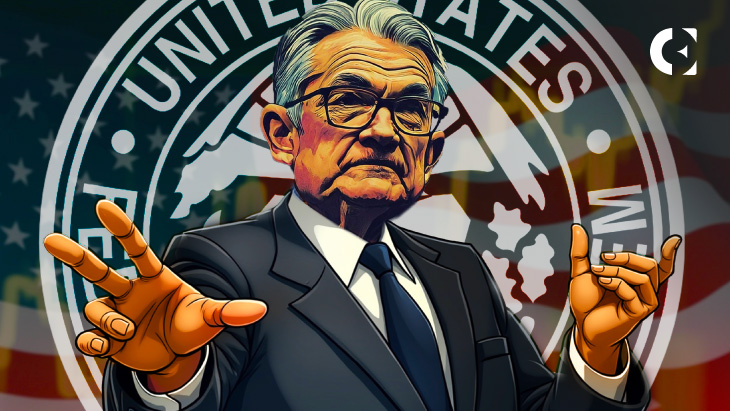- Fed Chair Powell expected to shift from QT toward QE focused on Treasuries
- Linked to Treasury financing needs discussed with Sec. Bessent; Hayes eyes summer
- Potential QE may support fiscal goals (deficit reduction, Trump trade policy)
Federal Reserve Chair Jerome Powell is expected to move toward renewed quantitative easing (QE), potentially focused on the U.S. Treasury bond market. This expectation follows a reported meeting between Powell and Treasury Secretary Scott Bessent in early March.
In a blog post, BitMEX co-founder Arthur Hayes suggested Powell is preparing to scale back the Fed’s current quantitative tightening (QT) program. Hayes believes the Fed will support Treasury markets with new liquidity injections, possibly starting this summer.
Why the Potential Shift from QT to QE?
According to central banking observers, Bessent pointed out to Powell during their meeting that upcoming Federal Open Market Committee (FOMC) monetary policy decisions must align with the Treasury Department’s significant financing needs.
The March meeting reportedly raised the urgency of potentially resuming QE to help absorb the large volume of new Treasury bond issuance required to manage ongoing federal deficits and handle substantial government debt rollovers smoothly.
However, capital gains tax receipts remain a major funding source for the federal government. Those tax receipts depend heavily on rising equity market valuations to meet projections.
Related: FOMC meeting this week: All eyes on Powell for rate hints and potential QT end, impacting crypto
How Do Trade Policies Influence Monetary Strategy?
U.S. President Donald Trump’s stated trade policy goals also play a role in the broader economic picture. His administration’s focus remains centered on attempting to rebalance the large U.S. current account deficit and encourage shifts back toward more domestic manufacturing activity.
President Trump has maintained publicly since his first term in 2016 that the U.S. trade deficit, particularly with China, is unsustainable for the nation’s long-term health.
Historical economic context reinforces concerns about these long-term trade trajectories. China’s 1994 currency devaluation and its subsequent 2001 entry into the World Trade Organization (WTO) are often linked by economists to the decades-long offshoring of significant U.S. manufacturing capacity that followed.
The result was a deep and persistent U.S. trade deficit over many years, as official current account data confirms. Trump’s proposed reversal of that long-term trend requires major domestic industrial policy support and likely substantial private investment.
Why Might the Fed Need to Align with Fiscal Goals?
The Federal Reserve’s independent monetary policy decisions play a critical role in potentially enabling or hindering these broader fiscal and trade policy shifts pursued by the administration.
Persistently tight monetary conditions, for example, risk slowing overall economic growth and potentially weakening equity market performance significantly.
Related: Hayes Dismisses Tariffs as Noise, Eyes Fed QE Fueling $110k+ Bitcoin
Powell’s potential policy adjustment toward renewed QE therefore likely signals a perceived need for broader fiscal and monetary policy alignment.
Disclaimer: The information presented in this article is for informational and educational purposes only. The article does not constitute financial advice or advice of any kind. Coin Edition is not responsible for any losses incurred as a result of the utilization of content, products, or services mentioned. Readers are advised to exercise caution before taking any action related to the company.









